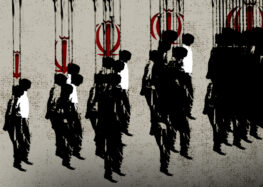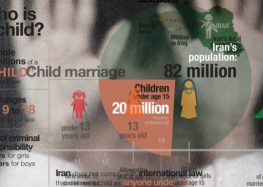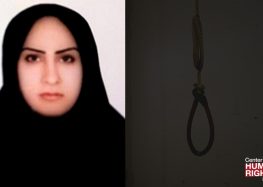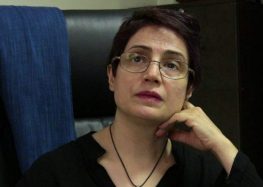114 Child Offenders Awaiting Hangman’s Noose
(18 June 2008) The International Campaign for Human Rights in Iran published a list of 114 child offenders awaiting execution in Iran today, the first time such a list has been made available detailing the practice, which has been banned in all but a handful of countries.
The list is the result of comprehensive primary research by prominent Iranian human rights defender Emad Baghi. It forms part of his thus-far unpublished book “Right to Life II,” which demonstrates that such executions are not sanctioned by Islamic law as argued by Iranian authorities. The Iranian censors have not permitted the book to be published.Baghi’s book is the product of his research into religious sources arguing for the abolition of executions for child offenders. He compiles reliable and official sources for such executions carried out over the past decade. The book was distributed in limited numbers to Iranian officials in the Judiciary and the Parliament as well as to human rights defenders and organizations inside Iran. The Campaign has obtained a copy of “Right to Life II,” which documents approximately 177 execution sentences for child offenders over the past decade. Accordingly, 34 executions have taken place to date, another 114 are apparently pending, and the remainder have been pardoned.
Due to the lack of transparency in Iran’s judicial system, it is possible that some of the 114 juvenile offenders on death row may already have been executed.
Iran leads the world in executing child offenders. In 2008, Iran has carried two such executions: Javad Shojai on 26 February and Mohammad Hassanzadeh on 10 June.
“It is time for Iran to abolish the death penalty for child offenders. Even Judiciary officials within the system are against these executions, but do not dare to speak publicly,” Hadi Ghaemi, a spokesperson for the Campaign said.
The majority of child offenders on the list are accused of murder. However, as Baghi’s detailed research in his banned book shows, many sentences are based on confessions obtained from child defendants following torture and after interrogations in which they have had no access to a lawyer. Courts routinely ignore evidence presented by defendants demonstrating that they acted in self-defense.
According to Iran’s criminal code, boys may be subjected to penalties including execution at the age of 15 and girls at age of 9. Soghra Najafpour is a woman imprisoned in Rasht prison since 1990 when she was only 13 years old and accused of murder. Mosleh Zamani, another child offender, is sentenced to death for an “illicit relationship with his girlfriend.”
In the city of Firoozabad, Fars province, the execution of Abu Moslem Sohrabi, 17 at the time of his crime, is imminent, according to his father.
The Campaign called on Iran to immediately abolish the death penalty for child offenders. As a party to the Convention on the Rights of the Child and International Covenant on Civil and Political Rights, Iran is obligated to abolish such executions.
“We are calling upon the international community to denounce child executions in Iran and around the world, and to take concrete steps to convince the Iranian authorities that such uncivilized practices have negative consequences for Iran’s international and economic relations,” Ghaemi said.






